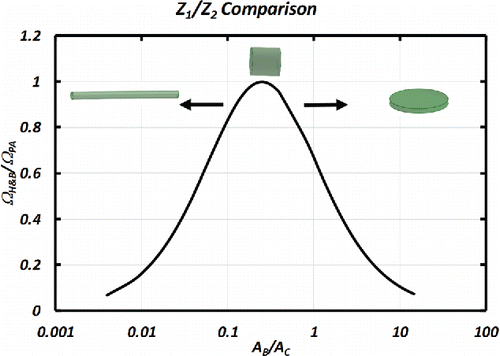Figures & data
Figure 1. (a) Given a molecular structure with a fixed orientation, one can infer the tensor Kij from three perpendicular directions (Ex, Ey, Ez). Black arrows correspond to the direction of the field, light gray (red) arrows correspond to the drag force response, and dark gray (blue) arrows correspond to the drift velocity resulting from the equilibrium. Only one drift velocity vj can be produced from each drag-Field pair for a given Kij, i.e., . (b) A rotation of the ion around Ex should still produce the same reaction Fx but a different drift velocity vj2. The tensor Kij does not contain this orientation of the ion so that
will not produce Fxi. Instead a rotation of the tensor must also be made to produce this new orientation
.

Figure 2. Shows the comparison between true and average displacements for two equivalent structures rotating fast (dotted line) and slow (dashed line). True mobility displacement is not in the direction of the Field but, when all directions are equally probable, the average displacement in the direction of the Field is given by <xi>. On the other hand, true displacement xj occurs in the direction of the velocity and is given by the true mobility Z2. It must always be true that <xj> ≥<xi>. Δt is the time taken for a single rotation while τ is the total time to cover a given distance.


